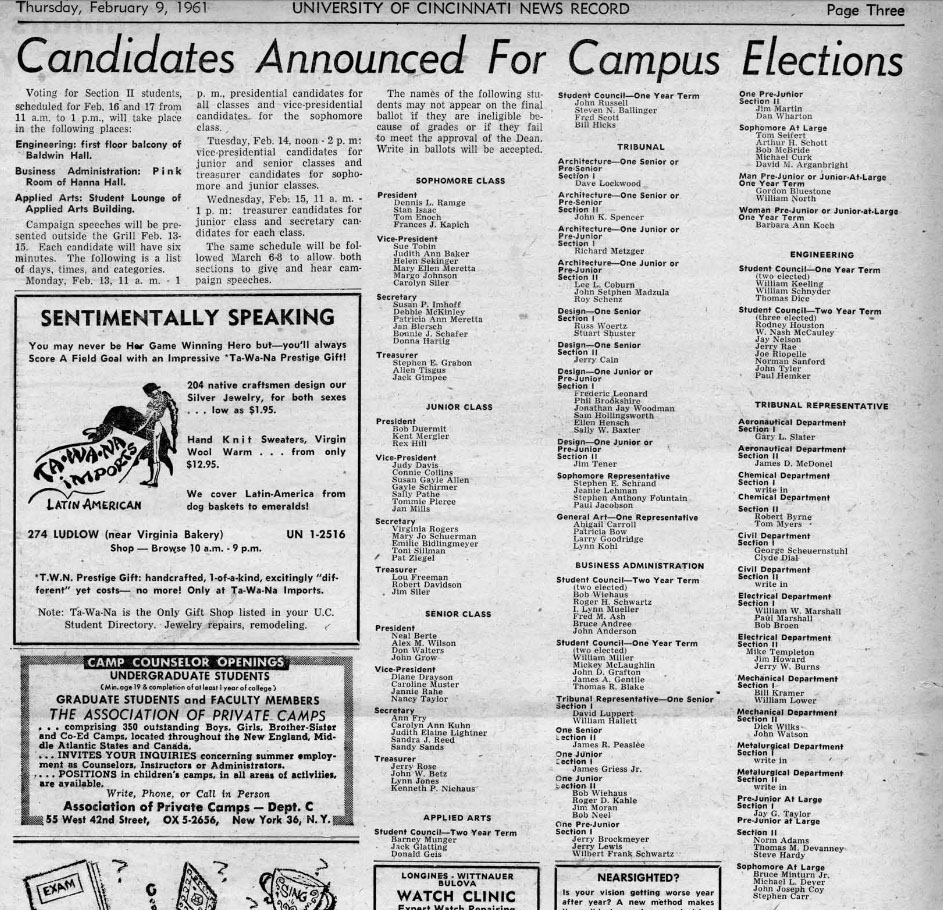By: Iman Said, ARB Intern, 2014-2015
Just about every college campus, and now almost every high school, has some form of a student government. It’s a coalition of students who put on events, work on projects, and speak to administrators and members of the community on issues related to the students.
Today, the UC Undergraduate Student Government is made up of a Senate, a Cabinet, Boards, and College Tribunals. This makes for an organization that is involved in just about every aspect of student life. Elections are held every year, usually in February, and candidates select a President and Vice President, as well as eight At-Large Senators. After those positions have been chosen, Cabinet positions are filled using an application process. Any student can apply to a cabinet position, no matter their age or year in school. Each of the Tribunals then holds their own internal elections to select their executive board and their representative to Senate.
However, UC did not always have a student government that was open to all students. In fact, a large portion of the College Tribunals was made up of seniors or Pre Seniors. According to the February 9, 1961 edition of the News Record, the Tribunals were also divided into representatives from different areas of study. For example, the Engineering Tribunal was made up of students from the Aeronautical department, the Chemical Department, the Electrical department, and the Mechanical department. There was also a greater emphasis on the individual class representatives. Starting with the sophomore class, every year held elections for a President, Vice President, Secretary, and Treasurer.
Many of the positions were also divided into one year or two year terms. Each college (in 1961, the colleges in concern were Applied Arts, Business Administration, and Engineering), selected a one year and a two year term representative along with the members of their tribunal.
Campaigning was also a much more toned down affair. Today, slate candidates (those running for President and Vice President) take over Mainstreet, branch campuses, college lobbies, and social media in an effort to convince about 23,000 students to vote for them. There are t-shirts, give aways, pizza, candy, hot cards, and so much more. In 1961, each candidate was allowed only two posters to be hung in the ‘Grill’ and the ‘Student Union’. The result was a veritable wall of posters.
Elections are an essential piece of student engagement. The students involved in Student Government do great things for those on campus. The transition over the past twenty or so years has displayed a transition from a very college-centric campus to one that is focused on the engagement of students on a campus-wide level. This is most apparent in the change of the undergraduate Student Government from one that was made up of Tribunal representatives and class officers to a coalition of students from all parts of campus.


